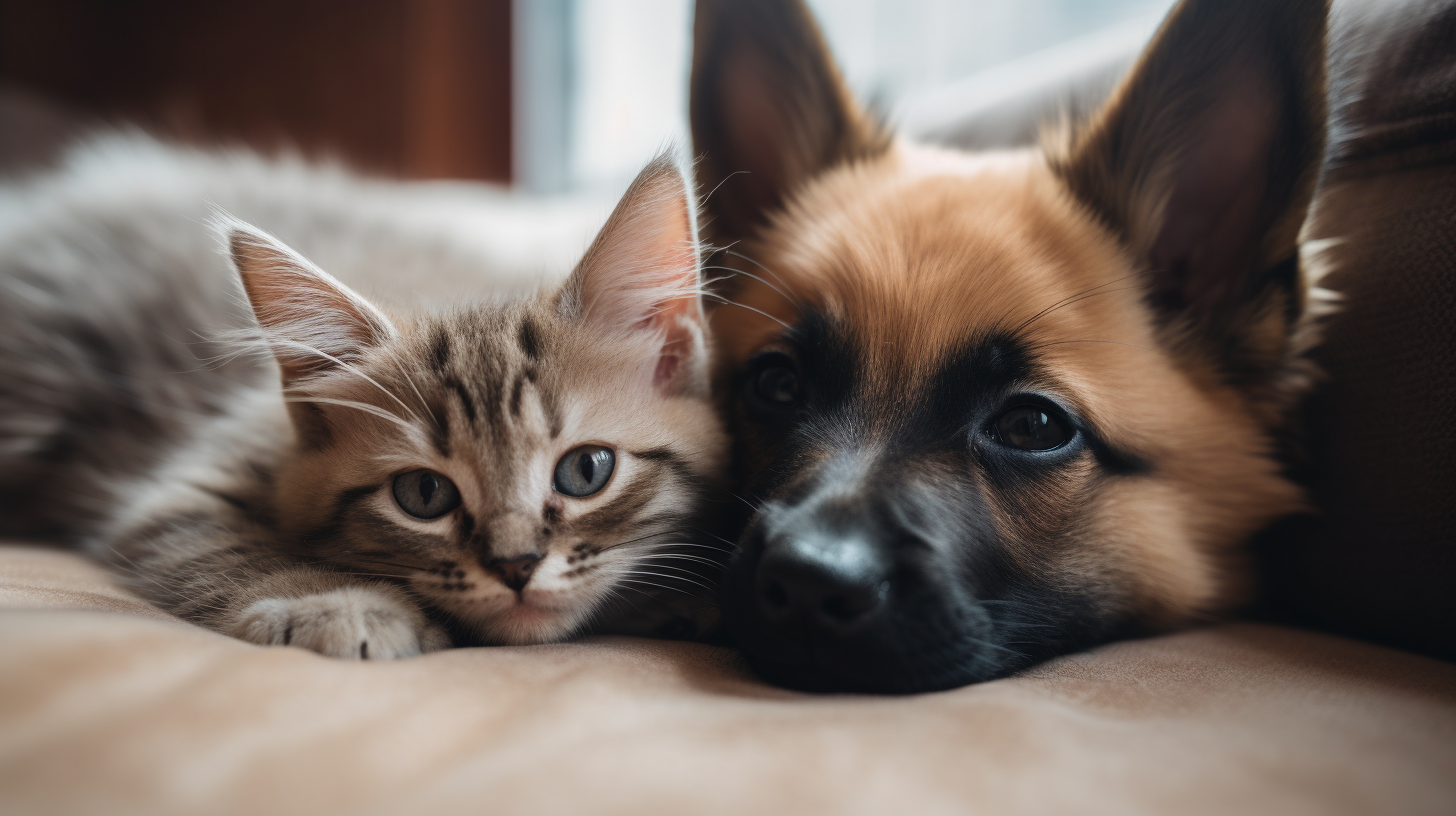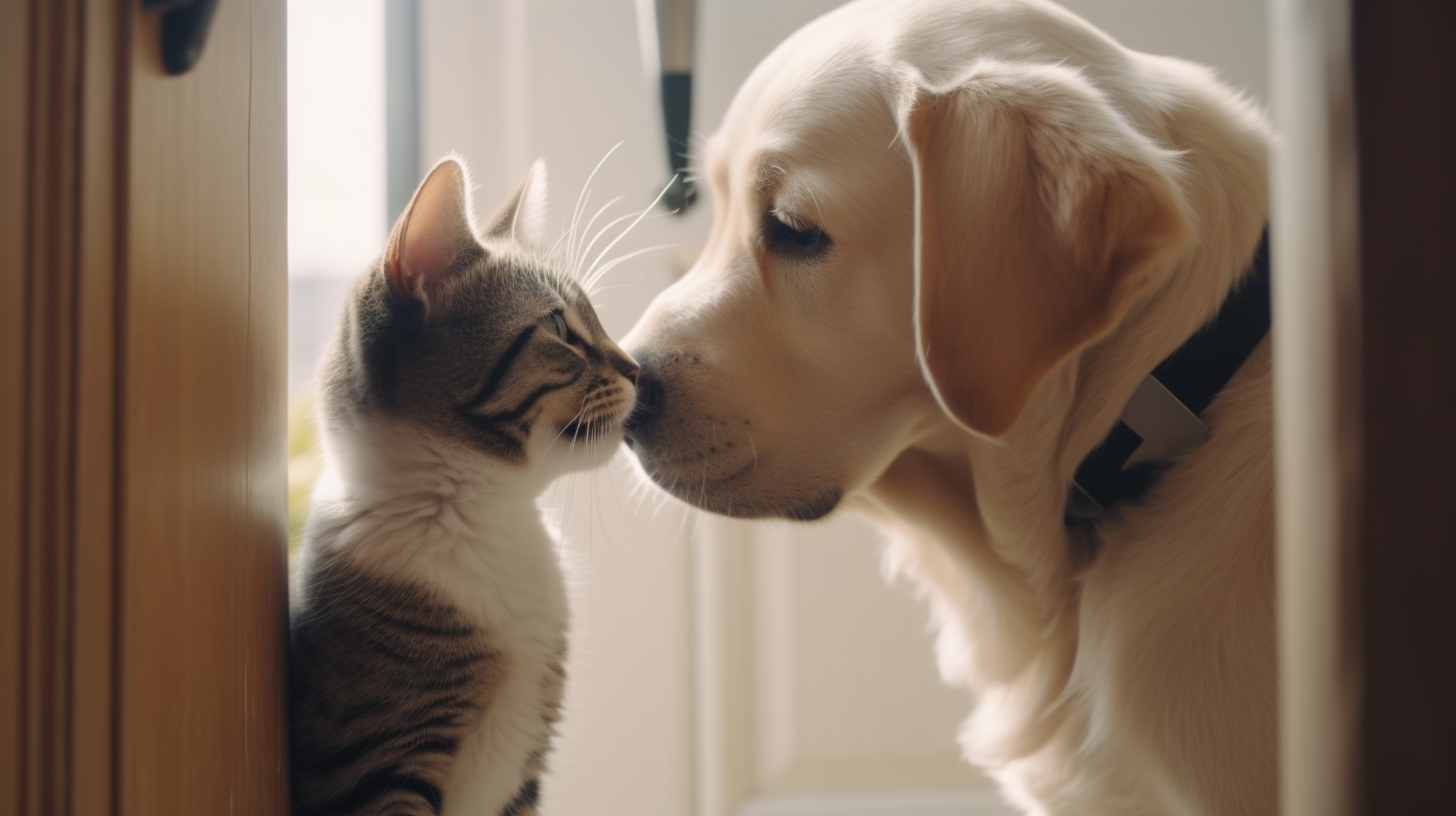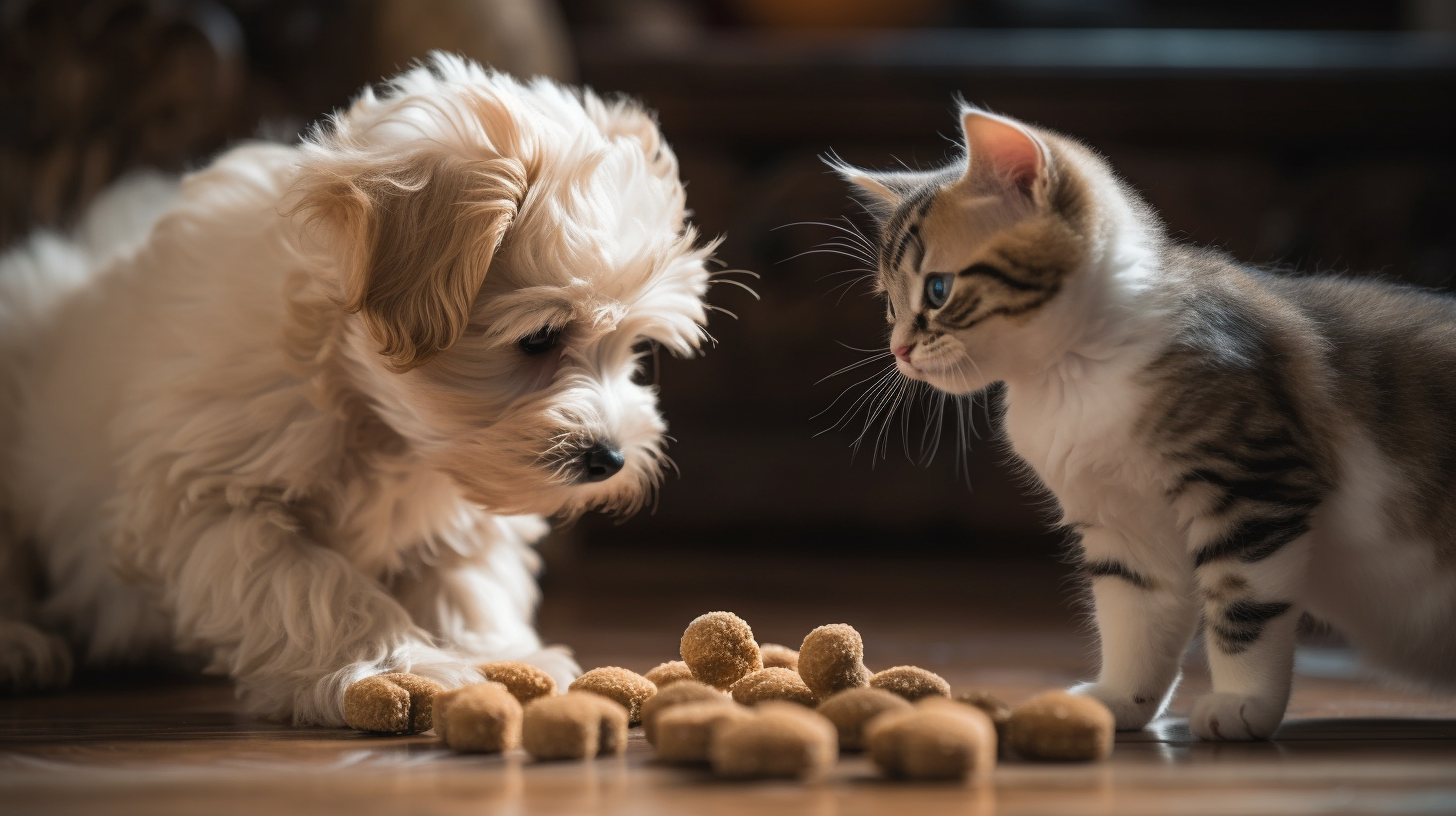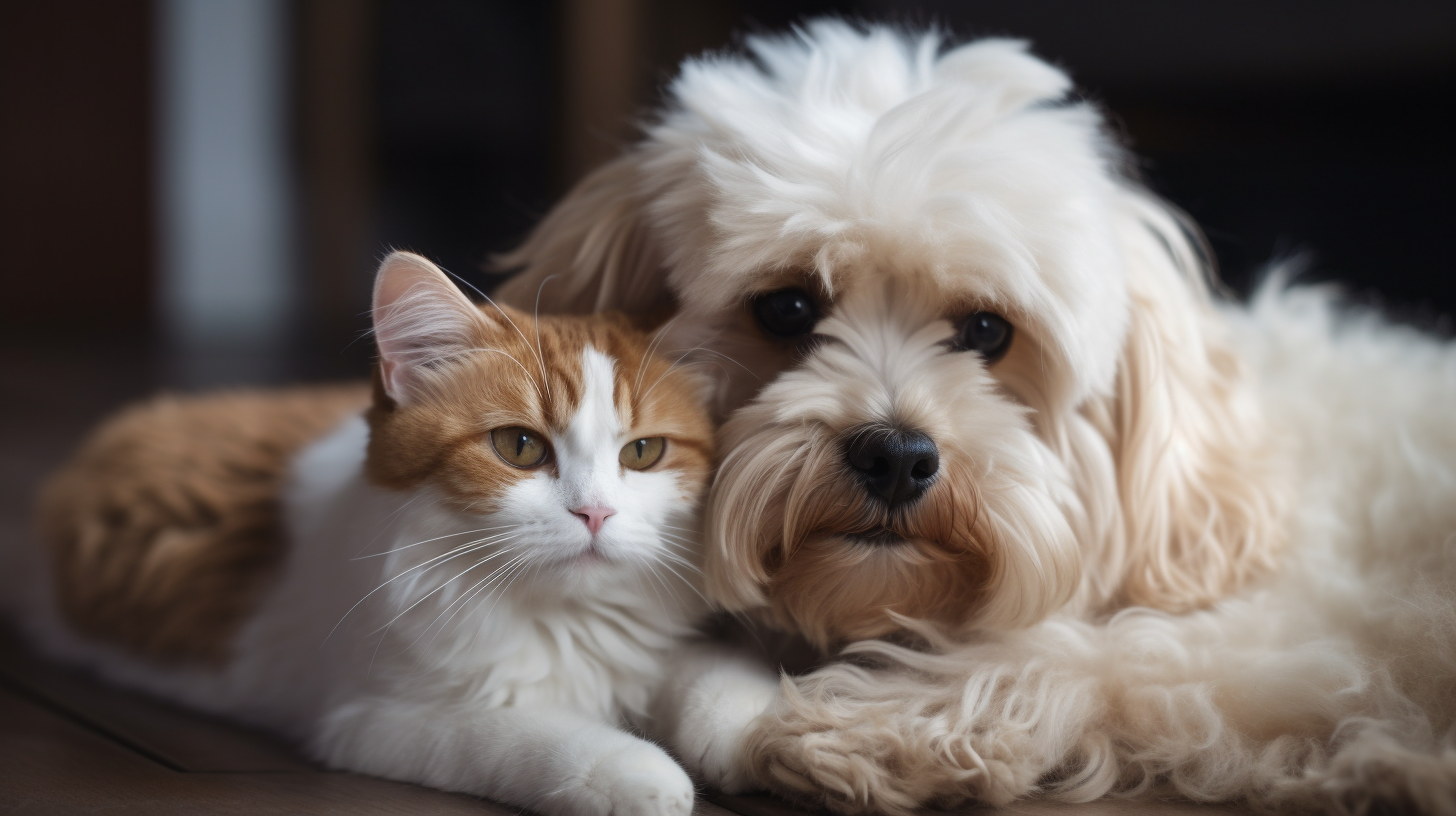
Furr-ever Friends: A Guide to Puppy-Cat Bonding
Introducing a puppy to your resident feline family can be a daunting task, but fear not! With a little patience, planning, and understanding, you can help create a harmonious home for your furry companions. In this guide, we will walk you through the process of introducing a puppy to your cat clan, ensuring a positive and safe experience for everyone. With our expert advice and insights, you’ll be well on your way to nurturing a loving and peaceful relationship between your pets.
Understanding Your Pets’ Unique Personalities
Before diving into the world of pet introductions, it’s essential to have a solid understanding of your pets’ unique personalities. By recognizing their individual traits and tendencies, you can better prepare for their first meeting and subsequent interactions.
Recognizing your cat’s territorial nature
Cats are known for their territorial behaviour, and this can play a significant role in how they respond to a new addition to the household. To better understand your cat’s territorial nature, observe their behaviour and take note of their preferred spaces and routines. Cats may display territorial behaviours such as marking, guarding resources, or even aggression towards newcomers.
Identifying your puppy’s energy levels
Puppies come with varying energy levels, and understanding your puppy’s unique temperament is crucial when introducing them to your cat. Some breeds are more energetic than others, so it’s essential to know what to expect from your puppy’s breed and individual personality. High-energy puppies may be more challenging for cats to accept, as their boisterous behaviour may be perceived as threatening.
Interpreting body language and signals
Both cats and dogs use body language to communicate their feelings and intentions. By understanding these signals, you can better predict and manage potential conflicts during the introduction process. For example, a wagging tail in cats usually indicates agitation, while a wagging tail in dogs is generally a sign of friendliness.
Key Takeaways:
- Familiarize yourself with common body language cues for both cats and dogs to better interpret their feelings during the introduction process.
- Know your puppy’s energy levels and how they may impact the introduction process with your cat.
- Be aware of your cat’s territorial tendencies to better anticipate potential conflicts and create a smoother introduction process.
Preparing for the Introduction
Once you have a solid understanding of your pets’ personalities, it’s time to prepare for their big introduction. With careful planning and consideration, you can help set the stage for a successful first meeting.
Creating safe spaces for both pets
Before the introduction, ensure both your cat and puppy have their own designated safe spaces in your home. These spaces should provide a comfortable environment where each pet can retreat to if they feel stressed or overwhelmed. Providing separate sleeping areas, hiding spots, and elevated perches for your cat can help them feel more secure during the introduction process.
Establishing scent familiarity
Scent plays a crucial role in how cats and dogs perceive each other and their environment. By familiarizing your pets with each other’s scents before the actual introduction, you can help ease tension and create a sense of familiarity. To do this, exchange bedding, toys, or blankets between your cat and puppy so they can get used to each other’s smell. This process can help reduce territorial reactions when they finally meet face-to-face.
Gradually exposing pets to each other’s presence
Before the actual introduction, it’s essential to gradually expose your pets to each other’s presence. This can be done by placing a barrier, such as a baby gate or a screen door, between the two pets, allowing them to see and hear each other without physical contact. Slowly increase the time they spend in each other’s presence, and reward both pets with treats and praise for calm behaviour. This gradual exposure will help them become more comfortable with each other and lay the groundwork for a successful introduction.
Key Takeaways:
- Create safe, comfortable spaces for both your cat and puppy to help reduce stress and anxiety during the introduction.
- Promote scent familiarity between your pets before their first meeting to help minimize stress and territorial behaviour.
- Use controlled exposure to help your pets become more comfortable with each other’s presence before their first face-to-face meeting.
The Big Introduction Day

After preparing your pets and environment, it’s time for the big day – the actual introduction. With careful planning, supervision, and patience, you can help ensure a positive and safe experience for both your puppy and cat.
Choosing the right time and setting
The timing and setting of your pets’ first meeting can have a significant impact on its success. Choose a quiet, neutral space in your home where neither pet feels territorial or threatened. It’s also essential to schedule the introduction when both pets are calm and relaxed – avoid meal times or periods of high activity.
Supervising and supporting the first interaction
During the first meeting, it’s crucial to closely supervise and support both pets. Keep your puppy on a leash to prevent overly rambunctious behaviour that may frighten your cat. Allow your cat to approach your puppy at their own pace, and be prepared to intervene if either pet shows signs of aggression or fear.
Encouraging positive associations with treats and praise
Throughout the introduction process, use treats and praise to encourage positive associations between your pets. Rewarding them for calm, friendly behaviour will help reinforce the idea that the presence of the other pet is a positive experience. This positive reinforcement will help lay the foundation for a strong, harmonious relationship between your puppy and cat.
Key Takeaways:
- Choose a neutral, quiet space and the right time for your pets’ first meeting to help ensure a positive and stress-free introduction.
- Supervise and support your pets during their first interaction, ensuring their safety and promoting positive behaviours.
- Utilize treats and praise to create positive associations between your pets and foster a harmonious relationship.

Nurturing the Relationship Beyond the First Meeting
A successful first meeting is just the beginning of your pets’ journey to becoming the best of friends. Nurturing their relationship beyond the initial introduction is crucial to ensure a lasting, harmonious bond.
Reinforcing good behaviour in both pets
Consistently reinforcing good behaviour in both your cat and puppy will help establish a peaceful coexistence between them. Reward positive interactions, such as calm playtime, with treats and praise, and gently correct any unwanted behaviours like excessive chasing or rough play. Consistency is key in teaching your pets how to interact respectfully with each other.
Monitoring playtime and interactions
Even after a successful introduction, it’s essential to keep a close eye on your pets’ playtime and interactions. Look for signs of stress, fear, or aggression, and intervene if necessary. By closely monitoring their interactions, you can address any issues as they arise and ensure a positive, safe environment for both pets.
Adjusting and troubleshooting as needed
Each pet’s journey to building a harmonious relationship is unique, and it’s essential to be flexible and adapt to their individual needs. If you notice ongoing challenges or conflicts between your pets, consider adjusting your approach – this may include increasing the amount of separate resources, modifying your pets’ environments, or seeking professional guidance from a veterinarian or animal behaviourist.
Key Takeaway:
- Be consistent in reinforcing good behaviour and correcting unwanted behaviours to promote a respectful and harmonious relationship between your pets.
- Regularly monitor your pets’ interactions to identify and address any potential issues, ensuring a safe and positive environment.
- Stay flexible and adjust your approach as needed to address any ongoing challenges and promote a harmonious relationship between your pets.
Ensuring a Safe and Comfortable Environment
A key component in fostering a harmonious relationship between your cat and puppy is providing a safe and comfortable environment for both pets. By taking the necessary steps to create a secure and supportive home, you can help minimize stress and promote a positive relationship.
Providing separate resources for each pet
To reduce competition and territorial behaviour, ensure that your cat and puppy have separate resources, such as food and water dishes, litter boxes, and toys. Having multiple resources will prevent both pets from feeling the need to guard their possessions and help maintain a peaceful atmosphere in your home.
Maintaining a clean and organized living space
A clean and organized living space is essential for your pets’ overall well-being and happiness. Regularly cleaning litter boxes, food and water dishes, and pet bedding will help prevent the spread of germs and odours, while also minimizing stress for both your cat and puppy. Organizing your pets’ belongings and keeping clutter to a minimum will also help create a more comfortable and welcoming environment.
Balancing attention and individual time for each pet
While it’s important to encourage bonding between your pets, it’s equally important to provide individual attention and care for each of them. Spending one-on-one time with each pet will help them feel valued and secure, reducing the risk of jealousy and competition. Regularly engaging in individual playtime, grooming sessions, and cuddles will help foster a strong bond between you and each pet, while also promoting a healthy and happy home environment.
Key Takeaways:
- Offer separate resources for each pet to reduce competition and territorial behaviour, ensuring a more peaceful environment.
- Keep your living space clean and organized to promote a healthy and stress-free environment for your pets.
- Balance attention and individual time for each pet to ensure they feel valued and secure, minimizing jealousy and competition.
The Road to Harmonious Bliss
Embark on the road to harmonious bliss by nurturing the bond between your cat and puppy. Remember that patience, understanding, and persistence are essential for a loving and peaceful relationship between your pets.
Celebrating small victories
As your pets begin to adapt to each other’s presence and form a bond, take the time to celebrate their small victories. Whether it’s a peaceful moment shared between them or an adorable play session, acknowledging these positive milestones will help reinforce the progress you’ve made and motivate you to continue nurturing their relationship.
Accepting that relationships take time and patience
It’s essential to remember that building a harmonious relationship between your cat and puppy will take time and patience. Each pet is unique, and their journey to friendship may not always follow a linear path. It’s normal to experience setbacks and challenges along the way, but with persistence and understanding, you can help your pets navigate these obstacles and grow closer.
Providing ongoing love and support to both pets
As your cat and puppy continue to adjust to each other and form their unique bond, it’s important to provide ongoing love and support to both pets. Your love and encouragement will not only help them feel secure and comfortable in their new relationship, but also strengthen their connection with you.
Key Takeaways:
- Celebrate your pets’ small victories as they bond and grow closer, reinforcing the progress made and motivating you to continue fostering their relationship.
- Embrace the unique journey of your pets’ relationship, understanding that it may take time, patience, and persistence to foster a strong, loving bond.
- Offer ongoing love and support to both your cat and puppy as they continue to bond and grow closer, ensuring a strong foundation for a happy, harmonious home.
Unleashing Your Pets’ Inner Pals
As your cat and puppy continue to develop their relationship, it’s essential to encourage and embrace their unique bond. By nurturing their friendship, you can help unleash their inner pals and create a harmonious, happy home for both pets.
Embracing the unique bond between your pets
Every pet relationship is unique, and the bond between your cat and puppy will have its own special characteristics. Embrace the individuality of their connection, and provide an environment where both pets can express themselves and grow closer. By supporting and celebrating their unique bond, you can help foster a loving, lasting friendship.
Watching for signs of lasting friendship
As your pets continue to bond, keep an eye out for signs that their friendship is becoming strong and lasting. These signs may include:
- Comfortable body language and relaxed postures in each other’s presence
- Playing together gently and respectfully
- Grooming each other or engaging in other mutual care behaviours
- Resting or sleeping close to each other
By watching for these signs, you can gauge the progress of your pets’ relationship and continue to support their growing friendship.

Encouraging healthy play and socialization
Promote healthy play and socialization between your cat and puppy to strengthen their bond and help them learn appropriate behaviours. Use toys, treats, and interactive games to engage both pets in shared activities, ensuring that playtime remains safe and enjoyable for all involved.
Key Takeaways:
- Encourage and embrace the individuality of your pets’ bond to help nurture a strong, loving connection between them.
- Look for signs of a lasting friendship between your pets and continue to support their unique bond as they grow closer.
- Foster healthy play and socialization between your pets to strengthen their bond and teach appropriate behaviours.
Celebrate Your Furry Family’s Success
As your cat and puppy establish a harmonious bond, take the time to celebrate the success of your furry family members. Reflect on their journey, capture memories of their newfound friendship, and share your story with fellow pet lovers to inspire and encourage others.
Reflecting on your pets’ journey to harmony
Take a moment to look back on the progress your pets have made, from their initial introduction to their current bond. Celebrate the challenges they’ve overcome and the growth they’ve experienced, and acknowledge your role in helping them achieve a loving, lasting friendship.
Capturing memories of your pets’ newfound friendship
Document your pets’ budding friendship by capturing precious moments through photos, videos, or even journal entries. These memories will serve as a beautiful reminder of the journey they’ve taken and the bond they’ve formed.
Sharing your story with fellow pet lovers
Share your experience of introducing a puppy to your cat clan with other pet lovers, either through social media, online forums, or in-person groups. Your story can provide inspiration, support, and encouragement to others facing similar challenges and help build a community of like-minded pet enthusiasts.
Key Takeaway:
- Reflect on your pets’ journey and celebrate the progress they’ve made in building a harmonious relationship.
- Capture memories of your pets’ newfound friendship to cherish the moments they’ve shared and the bond they’ve built.
- Share your story with fellow pet lovers to inspire, support, and encourage others in their journey to create a harmonious pet family.
Frequently Asked Questions
How long does it take for a puppy and cat to become friends?
The time it takes for a puppy and cat to become friends varies greatly, depending on the individual pets and their personalities. It can take anywhere from a few days to several weeks or even months for pets to establish a bond. Patience, understanding, and persistence are key factors in helping your pets form a lasting friendship.
What if my pets show signs of aggression?
If your pets show signs of aggression during the introduction process, it’s important to intervene and provide a safe space for both animals. Reassess the situation and consider slowing down the introduction process, consulting a veterinarian or animal behaviourist for guidance if needed. Continued patience and gradual exposure can help reduce aggression and foster a harmonious relationship.
Can puppies and cats share the same sleeping area?
While some puppies and cats may eventually feel comfortable sharing the same sleeping area, it’s best to provide separate sleeping spaces during the initial introduction phase. This ensures that both pets have a safe, comfortable space to retreat to when they need time alone. As their relationship develops, they may choose to share a sleeping area on their own.
How can I prevent resource guarding between my pets?
To prevent resource guarding between your pets, provide separate resources for each, such as food and water dishes, litter boxes, and toys. Having multiple resources will help reduce competition and territorial behaviour, promoting a more peaceful environment in your home.
What if my puppy is too hyperactive for my cat?
If your puppy is too hyperactive for your cat, provide plenty of opportunities for your puppy to burn off energy through play and exercise. Providing your puppy with mental and physical stimulation can help them feel calmer when interacting with your cat. Additionally, monitor interactions between your pets and step in if necessary to ensure the safety and comfort of both animals.
Sources
- “How Should I Introduce My New Dog or Puppy to the Family Cat? – RSPCA Knowledgebase.” Rspca.org.au, 9 Nov. 2018, kb.rspca.org.au/knowledge-base/how-should-i-introduce-my-new-dog-or-puppy-to-the-family-cat/. Accessed 27 Apr. 2023.
- “Introducing Your New Puppy to Your Cat.” Blue Cross, 2019, www.bluecross.org.uk/advice/dog/introducing-your-new-puppy-to-your-cat. Accessed 27 Apr. 2023.
- “Introducing Dogs to Cats – American Humane.” American Humane, 8 July 2022, www.americanhumane.org/fact-sheet/introducing-dogs-to-cats/. Accessed 27 Apr. 2023.
- Huston, Lorie. “Introducing a New Puppy to a Household with a Cat.” Petmd.com, PetMD, 19 Mar. 2012, www.petmd.com/blogs/thedailyvet/lhuston/2012/mar/introduce_new_puppy_to_cat-13443. Accessed 27 Apr. 2023.
These reputable sources have been used throughout the article to provide accurate information, expert advice, and credible data to ensure that readers receive the most reliable guidance on introducing a puppy to cats.

